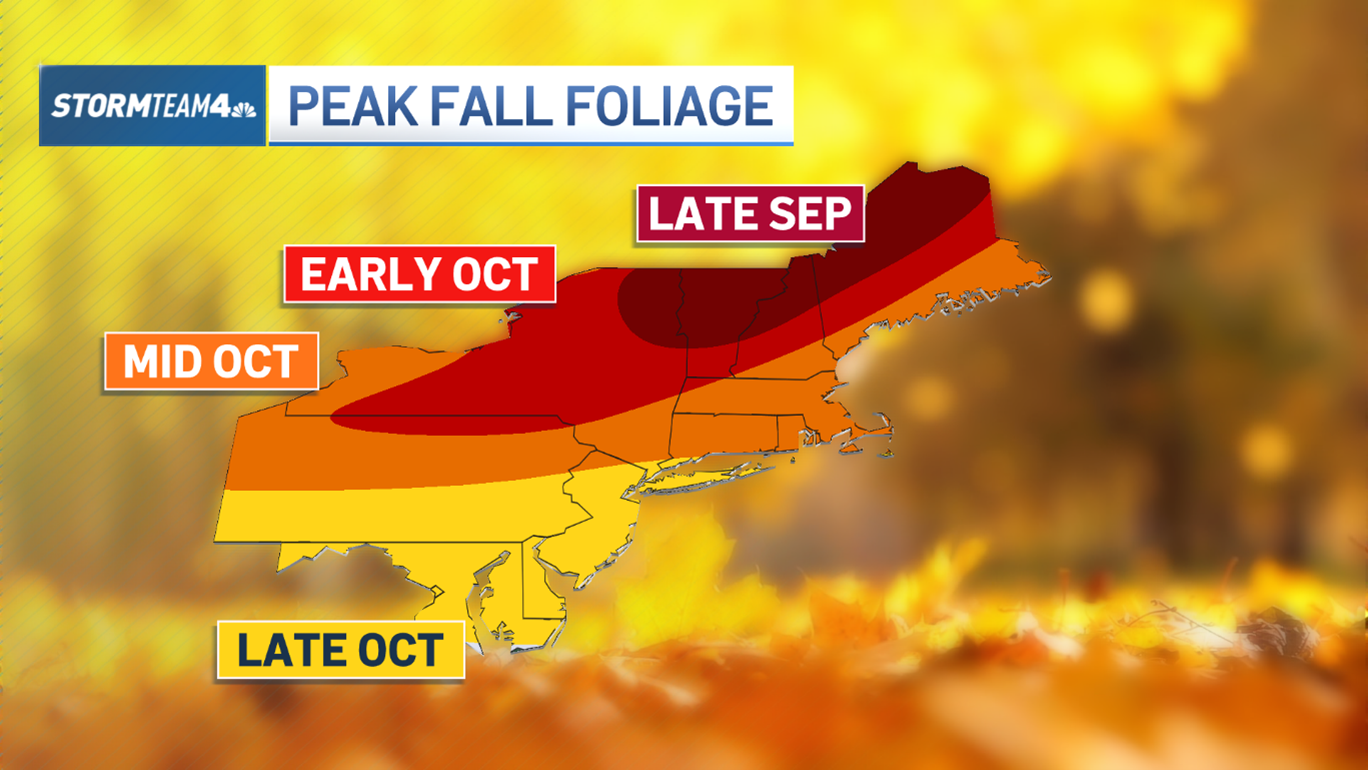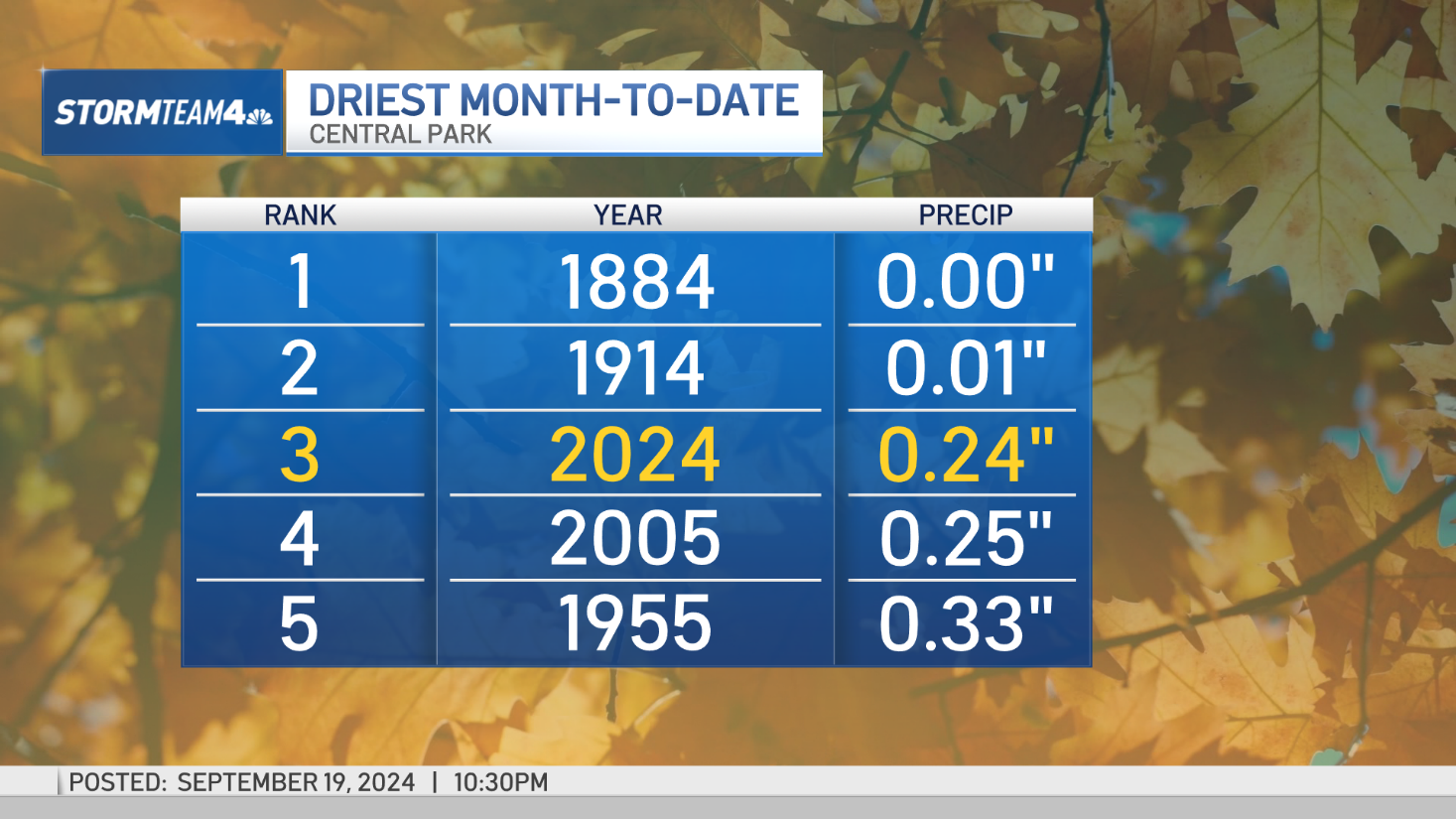Fall weather is soon going to be hitting the Northeast and just in time as the official start to fall -- the autumnal equinox -- is about to arrive.
The fall — or autumnal — equinox can land on Sept. 22 or 23 depending on the year
When is the autumnal equinox 2024?
This year, the autumnal equinox is scheduled for Sunday, Sept. 22 at 8:44 a.m. Eastern time in the Northern Hemisphere, according to the National Weather Service.
What is the autumnal equinox?
As the Earth travels around the sun, it does so at an angle.
Get Tri-state area news delivered to your inbox. Sign up for NBC New York's News Headlines newsletter.
For most of the year, the Earth’s axis is tilted either toward or away from the sun. That means the sun’s warmth and light fall unequally on the northern and southern halves of the planet.
Weather Stories
When the Northern Hemisphere is tilted toward the sun, that's called the summer solstice. This marks the first day of summer in the North and the first day of winter in the South.
One hundred and eighty days later, when the Southern Hemisphere is tilted toward the sun, it is called the winter solstice. This marks the first day of winter in the North and the first day of summer in the South.
The halfway points between solstices are the autumnal and vernal equinoxes. The word equinox comes from two Latin words meaning equal and night. That’s because on the equinox, day and night last almost the same amount of time — though one may get a few extra minutes, depending on where you are on the planet. This provides approximately 12 hours of day, followed by 12 hours of night.
When is the winter solstice?
The winter solstice is scheduled for December 21, 2024 at 4:21 a.m. Eastern time.
When does Daylight Saving Time end?
Under federal law, daylight saving time begins on the second Sunday in March, and runs through the first Sunday of November in most of the United States.
This year, that date falls on Sunday, Nov. 3, with clocks rolling back one hour at 2 a.m. that morning.
When will DST resume?
In 2025, daylight saving time will resume on March 9, with clocks springing forward.
What is daylight saving time?
Daylight saving time is a changing of the clocks that typically begins in spring and ends in fall in what is often referred to as "spring forward" and "fall back."
Under the conditions of the Energy Policy Act of 2005, daylight saving time starts on the second Sunday in March and ends on the first Sunday in November.
On those days, clocks either shift forward or backward one hour.
But it wasn't always that way.
Clocks used to spring ahead on the first Sunday in April and remained that way until the final Sunday in October, but a change was put in place in part to allow children to trick-or-treat in more daylight.
In the United States, daylight saving time lasts for a total of 34 weeks, running from early-to-mid March to the beginning of November in states that observe it.
Some people like to credit Benjamin Franklin as the inventor of daylight saving time when he wrote in a 1784 essay about saving candles and saying, "Early to bed, early to rise makes a man healthy, wealthy and wise." But that was meant more as satire than a serious consideration.
Germany was the first to adopt daylight saving time on May 1, 1916, during World War I as a way to conserve fuel. The rest of Europe followed soon after. The United States didn't adopt daylight saving time until March 19, 1918. It was unpopular and abolished after World War I.
Daylight saving time didn't become standard in the US until the passage of the Uniform Time Act of 1966, which mandated standard time across the country within established time zones. It stated that clocks would advance one hour at 2 a.m. on the last Sunday in April and turn back one hour at 2 a.m. on the last Sunday in October.
States could still exempt themselves from daylight saving time, as long as the entire state did so. In the 1970s, due to the 1973 oil embargo, Congress enacted a trial period of year-round daylight saving time from January 1974 to April 1975 in order to conserve energy.
Which states observe daylight saving time?
Nearly every U.S. state observes daylight saving time, with the exceptions of Arizona (although some Native American tribes do observe DST in their territories) and Hawaii. U.S. territories, including Puerto Rico, American Samoa, Guam and the U.S. Virgin Islands, do not observe daylight saving time.
The Associated Press contributed to this story.



